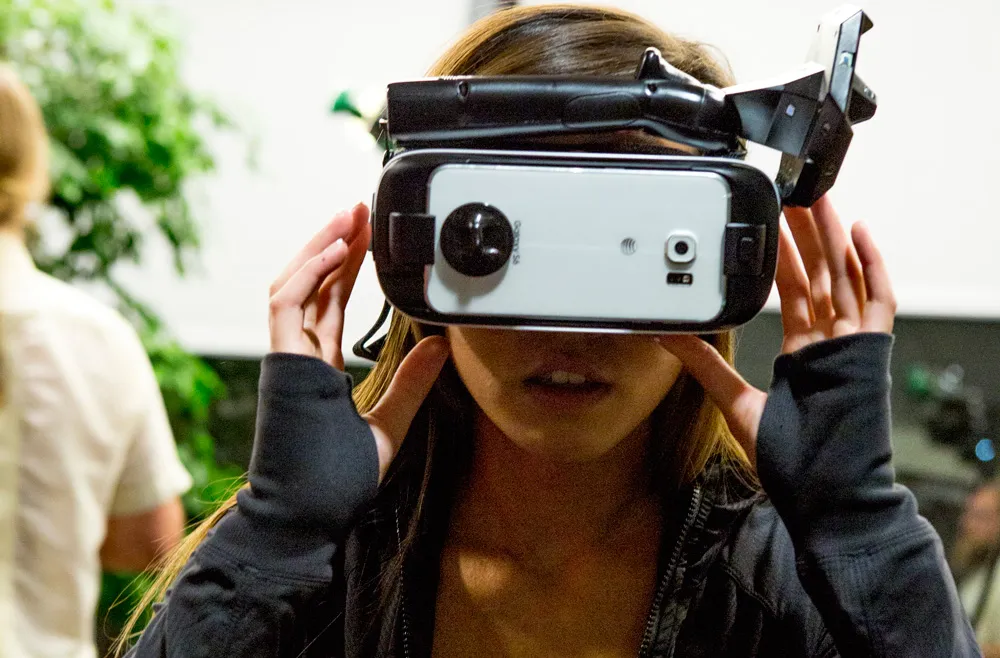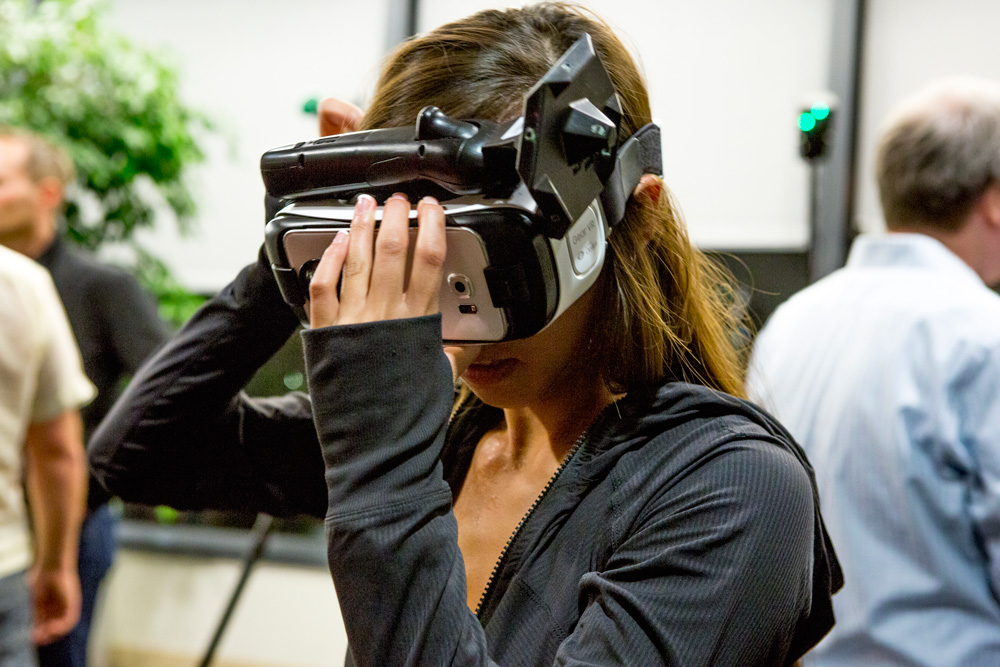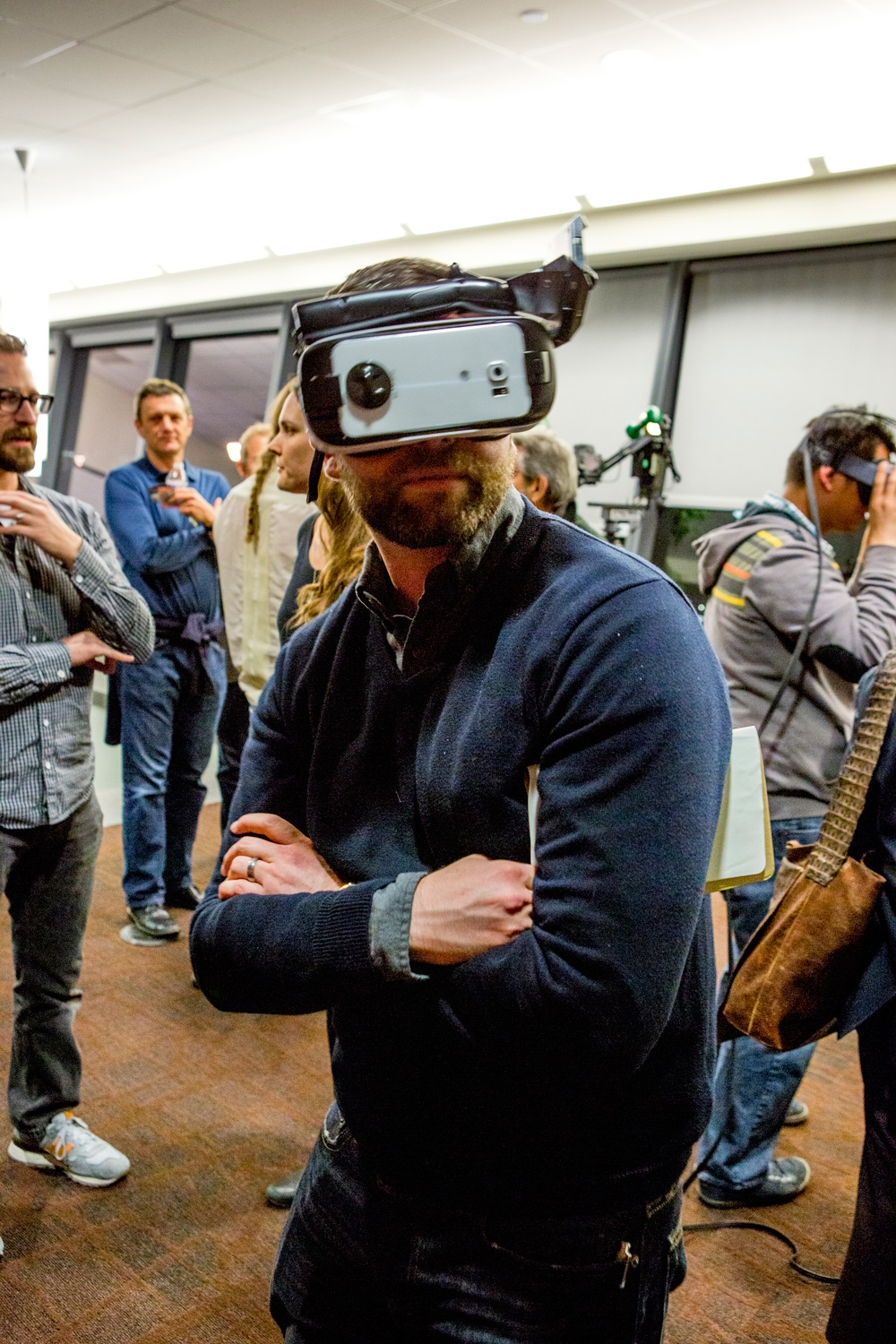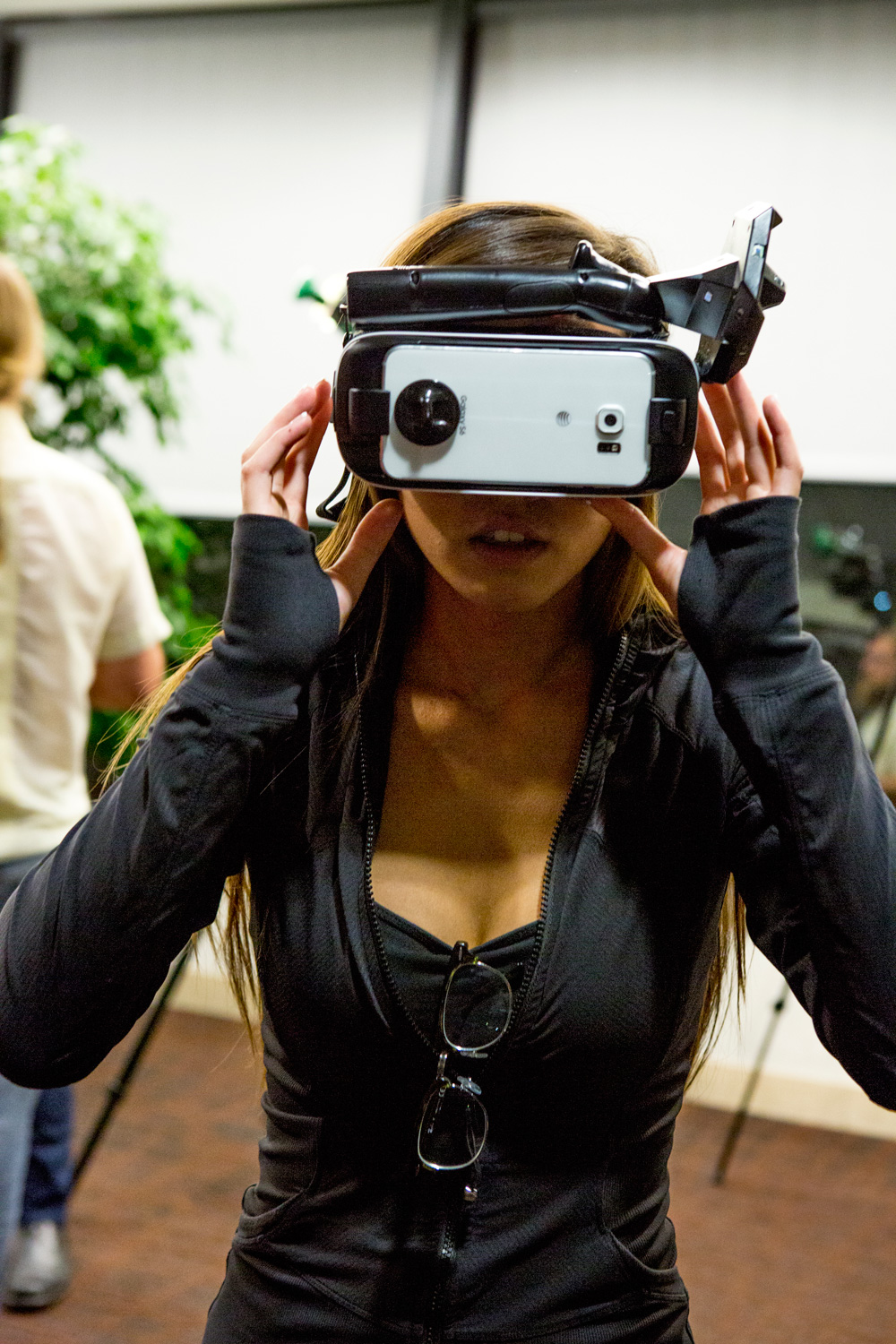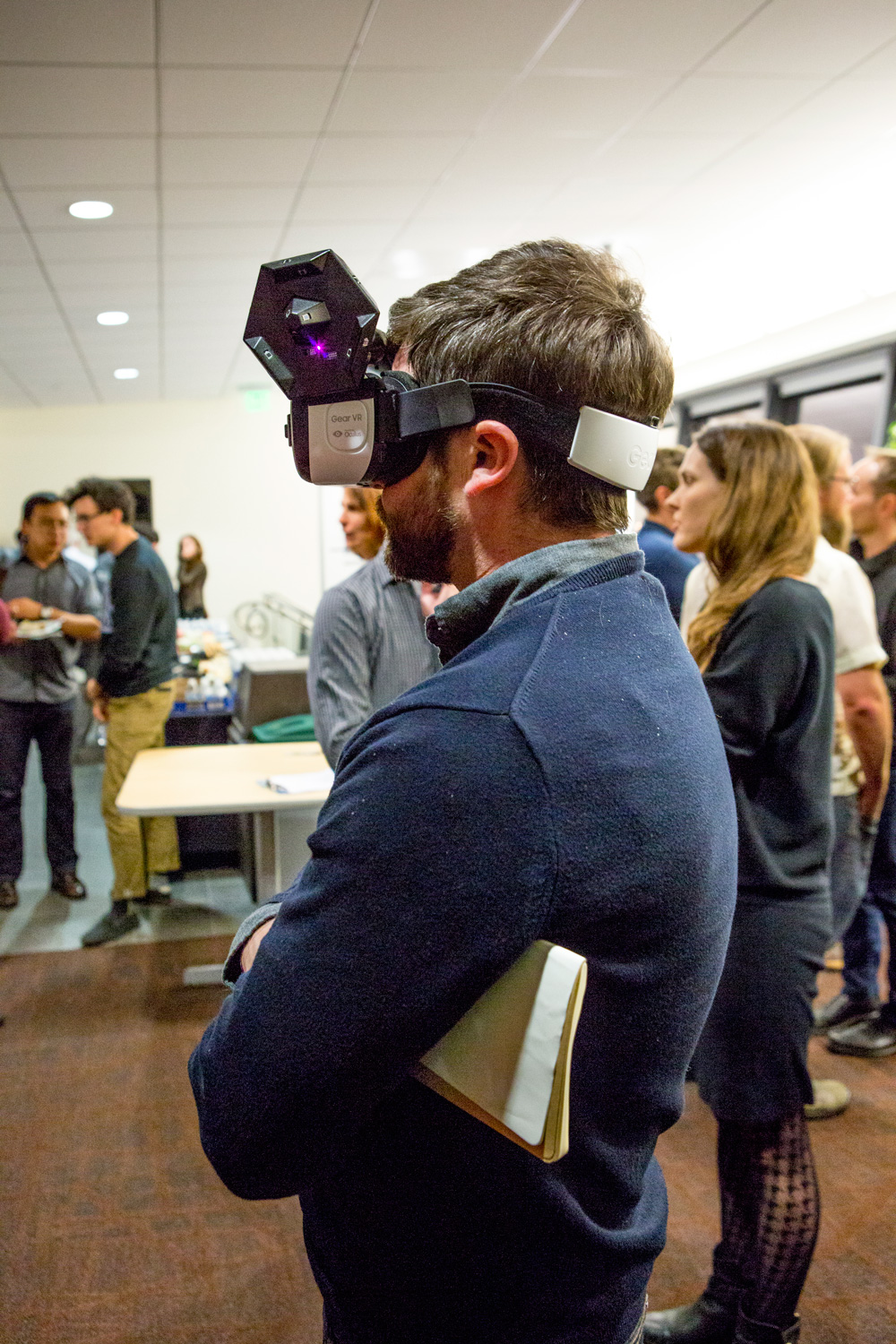In a couple days thousands of people will have a chance to experience VR for possibly the first time ever when the Samsung Gear VR officially releases Friday. The experience it delivers is fantastic, but for the VR enthusiast community it is missing a little something… positional tracking, the ability to move through a virtual space, not just look around it.
Addressing the problem on mobile has been hard. Last month, Oculus’ founder Palmer Luckey took to reddit to say “VR-grade inside-out tracking,” tracking done using a camera on the headset itself, “is not currently workable on mobile devices.” John Carmack, Oculus’ CTO, wants to get it done but also acknowledges some of the current sticking points saying “it does not look good for making an inside out tracking system that doesn’t consume a whole lot of battery power,” but confirming his desire to keep working on the problem. History has told us that when Carmack set’s his mind to something he tends to accomplish it, but for some the wait is just too much.
This is where OTOY comes in. Jules Urbach, Founder and CEO, believes “without positional tracking what we are doing is wasted” and he is right. The ability to have motion is a key part of presence and immersion; its part of what makes VR the last medium.
OTOY recently revealed on Twitter that they managed to get Gear VR positional tracking working using Vavle’s Lighthouse tracking stations, the same ones that track the HTC Vive. Last night I got test it out, and it was awesome.
https://www.youtube.com/watch?v=jv-DrdvCI1k
The headset looks a little silly, and initially I had doubts about how well it would work because it was just the Gear VR headset with a Vive hand controller attached to the top with Velcro. After several minutes of walking around the space, crouching, and jumping, I was thoroughly blown away. Not only is the latency low, but also the whole experience is untethered. Since Gear VR has the highest resolution of all the headsets currently available, resolution wasn’t sacrificed with the positional tracking.
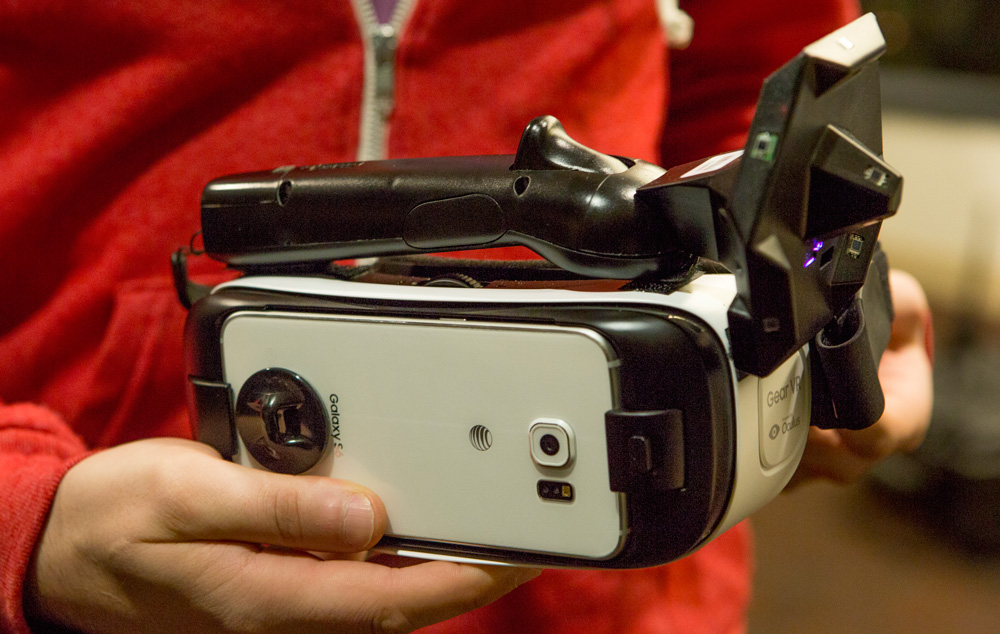
OTOY’s app allows for the PC to communicate with the Gear VR by detecting the position of the headset and sending a UDP packet; this allows for the tracking to work while using none of the phone’s GPU. I was bound to the demo area, but Urbach said that the tracking isn’t limited so the demo space can be as large or as small as the user wants it to be—the only limitation you have is the possibility of walking into a wall.
Read More: OTOY’s light field demos are an amazing step forward for VR and AR
The demo that I got to see was OTOY’s basic positional tracking demo, which consisted of a number of rainbow-colored cubes floating in space that you could walk through. OTOY, however, plans to take this technology and use it with experiences like their Bat Cave Experience created with their synthetic light field technology.
Although OTOY’s Gear VR hack is still a work in progress, Urbach says they’re about 55% of the way there in terms of having an end solution for positional tracking with mobile VR. He has no doubt that positional tracking will come to Gear VR, but he doesn’t want to wait for that day so he’s trying to get it now, “[Carmack] inspired a lot of our work with position tracking to move even faster.” The hack is currently for internal use only, but once it’s fully functional Urbach will incorporate the tracking into OTOY’s PC player, which is also a server, allowing content creators who are developing for positional tracking to be able to create content that will work on the Oculus Rift, HTC Vive, PlayStation VR and Gear VR (in developer mode).
More Pictures:
So, what is next? The team over at OTOY is going to work on adding a skeletal tracking layer. They’re also looking ahead towards things like Magic Leap, and using positional tracking to get them ready because without it light field content can’t really be tested. OTOY’s experimentation with positional tracking will not only accelerate the development of a consumer mobile positional tracking solution, but it will eliminate the delta between a VR experience on a mobile device and a PC. OTOY is the game changer mobile VR has been waiting for.
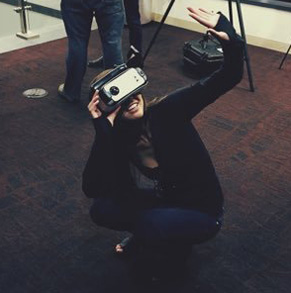 Jenn Duong is a passionate virtual reality enthusiast and the business development manager at KoomVR, a mobile VR content distribution company based in Los Angeles, CA. Outside of work, Duong manages Women in VR, an organization dedicated to bringing more women into the VR industry, and is actively involved in the VR community. You can follow her on Twitter @jenndefer.
Jenn Duong is a passionate virtual reality enthusiast and the business development manager at KoomVR, a mobile VR content distribution company based in Los Angeles, CA. Outside of work, Duong manages Women in VR, an organization dedicated to bringing more women into the VR industry, and is actively involved in the VR community. You can follow her on Twitter @jenndefer.

